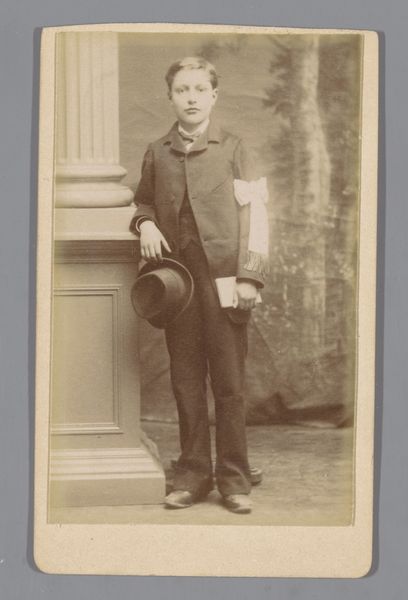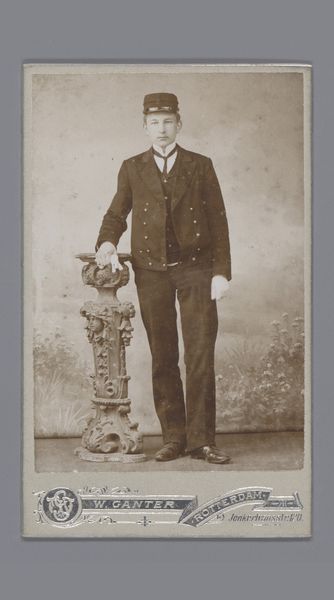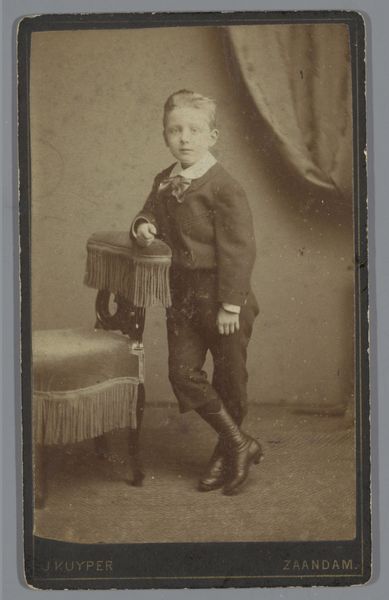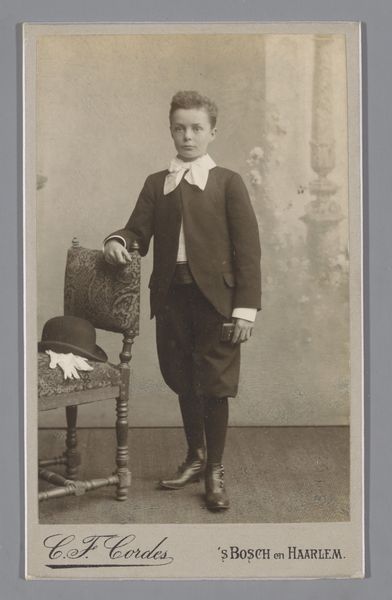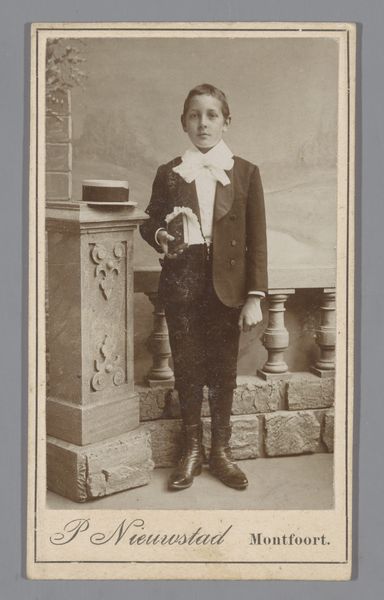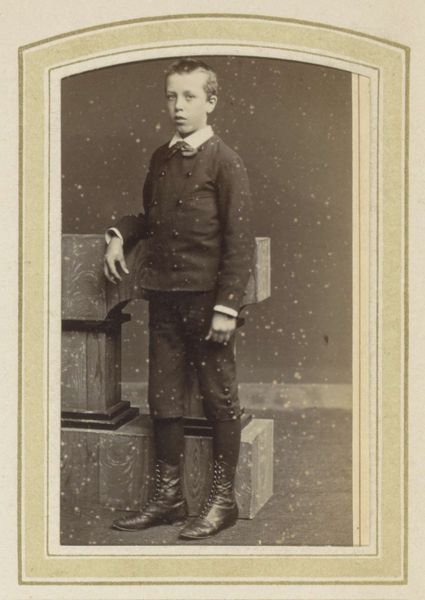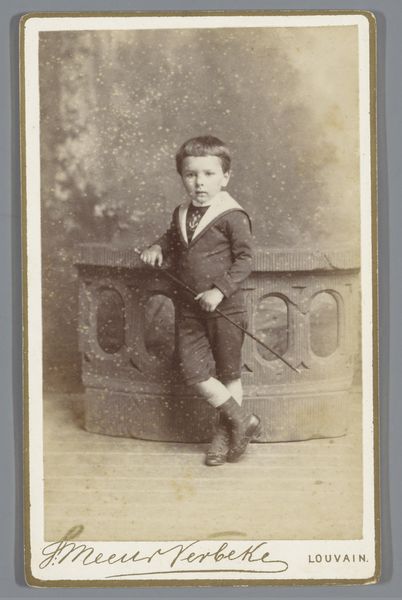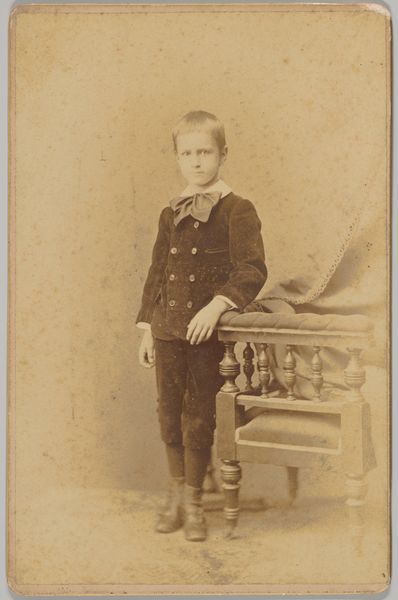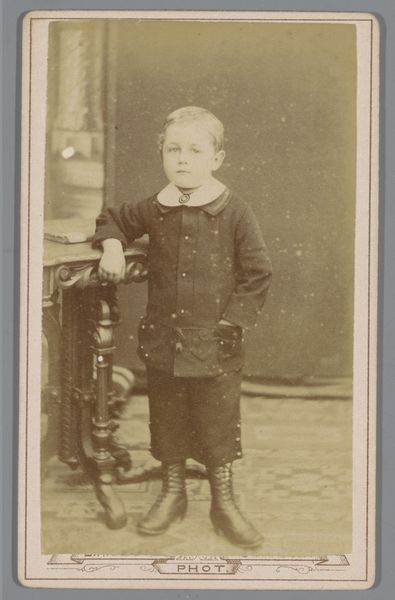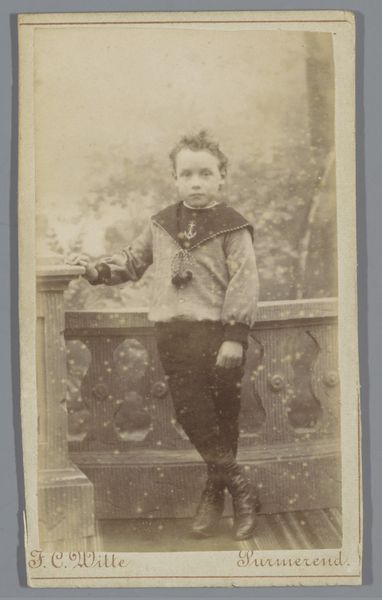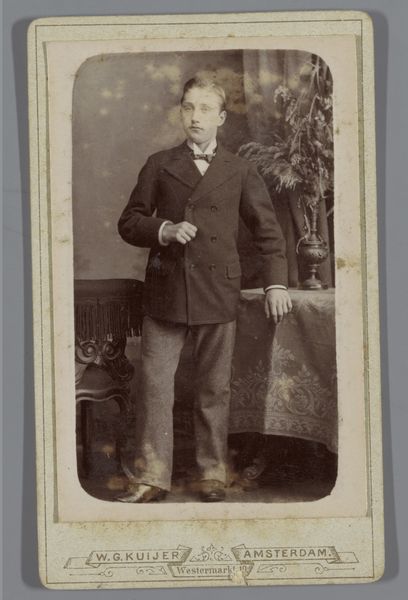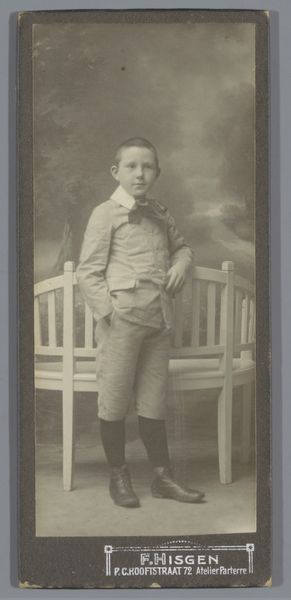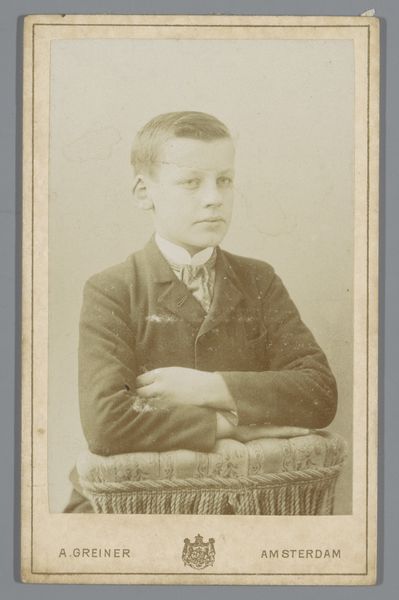
daguerreotype, photography, gelatin-silver-print
#
portrait
#
daguerreotype
#
photography
#
historical photography
#
gelatin-silver-print
#
19th century
#
realism
Dimensions: height 105 mm, width 64 mm
Copyright: Rijks Museum: Open Domain
Editor: This is "Portrait of an Unknown Boy" from sometime between 1880 and 1914 by the Gebroeders IJpma, made using a gelatin silver print. It has such a posed and formal feeling. What do you see in this piece? Curator: I see a carefully constructed image, steeped in the visual language of its time. The boy's attire, the architectural backdrop, even his reserved posture--these aren't simply capturing an individual, but invoking an idea of status and belonging. Notice the balustrade, and the draped classical vase with flowers – staging to situate the boy within the cultural values of that moment. Editor: That's interesting. So the photographer wasn’t just taking a picture, they were crafting a message? Curator: Precisely. The symbols surrounding the boy reflect the aspirations of the rising middle class in the late 19th century. A tailored suit, a hint of ornamentation in the background... each detail tells a story of social mobility and the importance of visual markers for upward striving. Consider too how photographic portraits gained popularity in tandem with social changes, offering new ways to solidify one’s presence and identity within society. The symbols here carry weight - cultural memory and psychological cues of status. Editor: So it’s less about the specific boy and more about what he represents. Are there similar things happening with other kinds of portraiture? Curator: Indeed! Throughout history, portraits have often served as symbolic representations rather than straightforward depictions. Think about royal portraits brimming with emblems of power. By seeing such a wide proliferation of photographs with clear symbolism, we gain understanding about what drove popular portraiture to take off so intensely. Editor: That really changes how I look at it. Thanks for pointing out those cultural symbols; it really helped put the image in a new perspective. Curator: My pleasure. It is precisely these echoes through history that enrich our understanding of both the artwork, and ourselves.
Comments
No comments
Be the first to comment and join the conversation on the ultimate creative platform.
